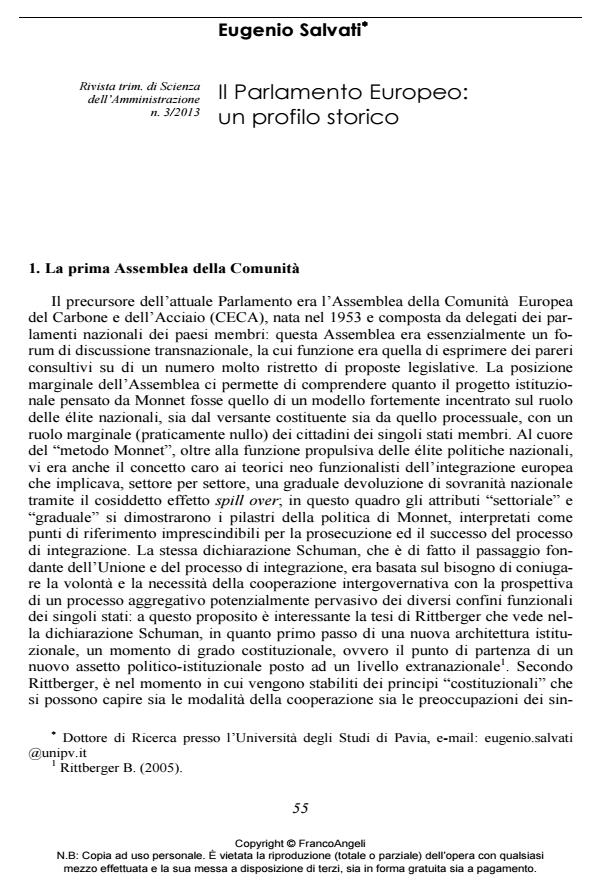The European Parliament: an historical outline
Journal title RIVISTA TRIMESTRALE DI SCIENZA DELL’AMMINISTRAZIONE
Author/s Eugenio Salvati
Publishing Year 2013 Issue 2013/3
Language Italian Pages 21 P. 55-75 File size 516 KB
DOI 10.3280/SA2013-003004
DOI is like a bar code for intellectual property: to have more infomation
click here
Below, you can see the article first page
If you want to buy this article in PDF format, you can do it, following the instructions to buy download credits

FrancoAngeli is member of Publishers International Linking Association, Inc (PILA), a not-for-profit association which run the CrossRef service enabling links to and from online scholarly content.
The European Parliament (EP). in its actual profile, is the product of the institutional development process which had characterized the progress of the integration process. The EP importance is strictly connected with the kind of relation between EU institutions and EU citizens: only a strong parliament could better perform the representative function and so provide a major legitimacy to the EU institutions. The aim of the article is to understand if the integration process had lead to a highly institutionalized parliament or if it had only empowered the legislative function of the EP, so neglecting the importance of the relation with the base of the representative institution, the citizens-electors.
Keywords: Parliament, european integration, representation
Eugenio Salvati, Il Parlamento Europeo: un profilo storico in "RIVISTA TRIMESTRALE DI SCIENZA DELL’AMMINISTRAZIONE" 3/2013, pp 55-75, DOI: 10.3280/SA2013-003004